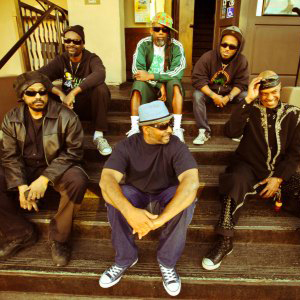

Consider 1991. Grunge was just starting to knock the hair-metal dipshits off the Billboard Charts. What remained of the 1980s thrash metal/hardocre punk crossover era was dying. Barely anyone had even heard of hip-hop yet. There was no World Wide Web, no cell phones and no laptops.
In San Jose’s case, a music “scene”—for lack of any other word—emerged on South First Street back when the word “alternative” still meant alternative. Many of us referred to the intersection of First and San Salvador streets as “Four Corners” back then, because four live music clubs—Marsugi’s, Cactus Club, F/X and Ajax—gave that intersection an alt-rock vibe unique for the time. Previously a street where retired tranny hookers went to score bad speed and shoddy pervs slithered into peep shows, South First transformed thanks to those four clubs and a handful of subsequent businesses. It became San Jose’s mini version of Greenwich Village, albeit for just a few blocks. Everybody knew everybody else and one could simply walk down there on any given night, get wasted on the cheap, and see bands anywhere. When I say “bands” I mean bands like Nirvana, No Doubt or Korn playing for 0-200 people. Many of the characters who attended the shows were musicians themselves, local bands popped up everywhere and the bands all supported each other. (Gee, what a concept!)
As a result, rarely were there jocks, douchebags or people with fluorescent hightops and pants on backwards. No one spouted illiterate dreck like, “Dude, that gig was hella dope.” And unlike the club-goers of today, if we needed to vomit or urinate in public, we didn’t do it on the sidewalk, we usually went behind a bush, to be more discreet about it.
All of the above is what spawned the original SoFA Street Fair in 1992. It was all about the music. Meaning: Bands. Music. Musical instruments. You know, that kind of stuff. Initially, sofas populated the street, people lounged, drank and migrated from music to music. Hippies, punks, metalheads, rastafarians, skaters, painters, poets, rockers and even people in regular clothes showed up. The scene was for anyone who felt alienated by the commercial meatmarket dumps or the mainstream dance-club crowd.
The SoFA Street Fair lasted for ten years before finally collapsing in 2001. Unfortunately.
Now, the festival is coming back, not to relive the past—and this is important—but to take advantage of the present. Several brand new waves of 20-somethings and early-30-somethings are screaming for live music again. For the festival, many bands from the original SoFA era are reuniting and a slew of newer bands will perform. Organizer and original SoFA instigator Fil Maresca says the SoFA Street Fair brand is one that still resonates with thousands of people. Even those too young to have experienced the original days are at least familiar with the legends and the stories. Even if they don’t care which band shot heroin in the kitchen at Marsugi’s—now the kitchen at First to Market—these generations seem to know the SoFA Street Festival brand and, says Maresca, they immediately connect it with live music, counterculture, anti-corporate sentiment, local talent, a lack of sports-bar douchebags and overall awesomeness in general.
“We’re trying to recapture that spirit, of the original days,” Maresca says. “It’s a different time, but at the same time, the resurgence here in SoFA has been started by not just retail … but also by the big towers full of people. We have residents now. There’s dog crap on the sidewalks. People are walking their dogs.”
Brian Eder and Cherri Lakey have simultaneously transformed the visual art scene, which also helps, might I add. And they’re getting thousands to participate. Bringing back the SoFA Street Fair, the original alternative music monster of downtown, will only do more to help accelerate the awesomeness. Local musician Lisa Dewey, who attended the first SoFA Street Fair in 1992 and played at the 1999 installment, says she’s looking forward to it.
“At the SoFA Street Fair, everyone accepted each other and we all just hung out,” she says. “I never felt intimidated by anybody. Whereas if you go to festivals at other cities, it’s not the same. I can’t explain it. San Jose has a grassroots feeling about it. … Hopefully this is going to be an amazing festival and it will happen again and again and again. But I’m just super excited that it’s back, because I’m still here. I haven’t given up on San Jose and I probably never will.”
Sun, Sep 14, noon-7pm
Free
S. First and William streets, San Jose



